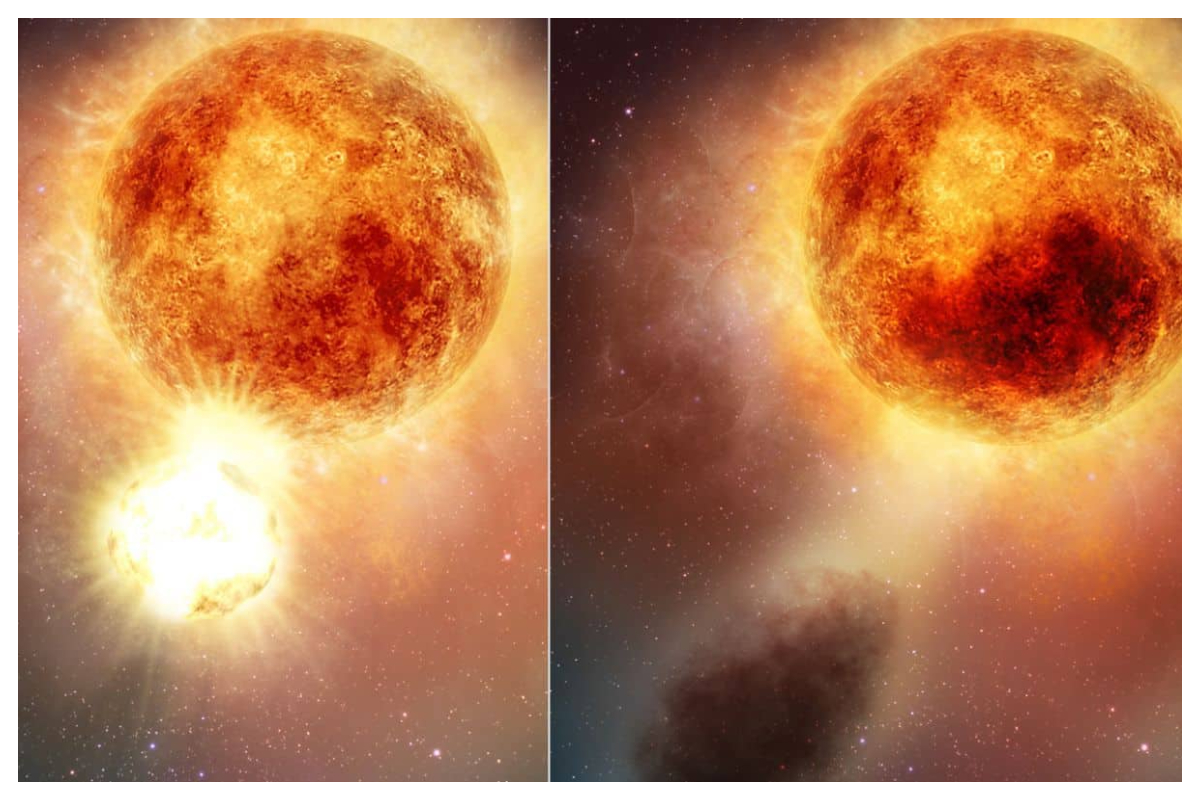No More Ads! YouTube Premium is now available in Pakistan
YouTube Premium debuts in Pakistan, offering ad-free viewing and additional features. YouTube...

Hubble captures a star blowing away a planet’s atmosphere
The Hubble Space Telescope has caught an intriguing sight: a nearby planet’s atmosphere is being eroded by energetic bursts from its star. This marks a significant contrast from the previous observation of the planetary system, where everything appeared normal.
The red dwarf star named AU Microscopii, or AU Mic, resides 32 light-years away from Earth, making it relatively close in astronomical terms. This star hosts one of the youngest observed planetary systems, with an age of less than 100 million years, a stark contrast to our sun’s 4.6 billion-year existence.
NASA’s retired Spitzer Space Telescope and the Transiting Exoplanet Survey Satellite identified the system in 2020. A subtle decrease in the star’s brightness indicated the presence of a gaseous planet passing in front of it during observations.
During the exoplanet’s single orbit, which spans 8.46 days, the initial observation by the Hubble Space Telescope appeared ordinary. However, when the telescope revisited the system 18 months later, a surprising revelation emerged. The closest planet to the star, AU Mic b, is undergoing the effects of the star’s radiation, causing the evaporation of its hydrogen atmosphere. This system contains at least two identified exoplanets, and the possibility of discovering more remains open.
The results of this study are set to be published in an upcoming edition of The Astronomical Journal.
Hubble captures a star blowing away a planet’s atmosphere
“We’ve never seen atmospheric escape go from completely not detectable to very detectable over such a short period when a planet passes in front of its star.” As mentioned by Keighley Rockcliffe, a physics and astronomy doctoral candidate at Dartmouth College in Hanover, New Hampshire, in a statement. “We were really expecting something very predictable and repeatable. But it turned out to be weird. When I first saw this, I thought, ‘That can’t be right.’”
Red dwarfs, the most prevalent type of star in the Milky Way, frequently harbor planets. While smaller and cooler than our sun, these stars emit potent stellar flares for extended durations compared to sun-like stars.
The destructive radiation is impacting AU Mic b, situated a mere 6 million miles from the star—a tenth of the distance between our sun and Mercury, its nearest planet.
As a consequence of this radiation bombardment, the planet’s atmosphere heats up, causing it to break free from the planet’s gravitational pull and expand into space.
“This frankly strange observation is kind of a stress test case for the modeling and the physics of planetary evolution,” Rockliffe said. “This observation is so cool because we’re getting to probe this interplay between the star and the planet that is really at the most extreme.”
The star’s intense flares arise from the entanglement of its magnetic fields, a result of movements within its atmospheric layers. When these magnetic fields become overly intertwined, they break and rejoin, leading to powerful flares that are 100 to 1,000 times more energetic than those emitted by our sun.
The planet experiences a barrage of flares, X-rays, and stellar wind—a flow of charged particles emanating from the star.
“This results in an uncontrolled and, frankly, unsettling stellar wind environment that affects the planet’s atmosphere,” said Rockcliffe.
With numerous red dwarf stars known to accommodate planets, astronomers are investigating whether planets orbiting them in close proximity can maintain their atmospheres despite the intense radiation. The inquiry also centers on the possibility that these planets are suitable for supporting life.
“We want to find out what kinds of planets can survive these environments. What will they finally look like when the star settles down? And would there be any chance of habitability eventually, or will they wind up just being scorched planets?” Rockcliffe said. “Do they eventually lose most of their atmospheres and their surviving cores become super-Earths? We don’t really know what those final compositions look like because we don’t have anything like that in our solar system.”
Catch all the Business News, Breaking News Event and Latest News Updates on The BOL News
Download The BOL News App to get the Daily News Update & Live News.